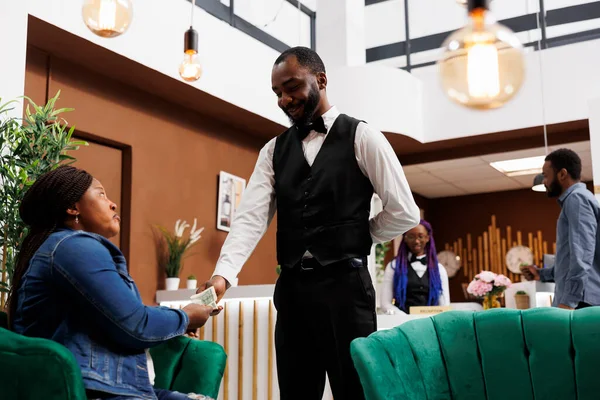
“Inviting a guest into your home is an act of true Southern hospitality,” says Fig & Dove creative director Colleen Waguespack. That holds true for numerous so-called “boomer rules” that, when occasionally disparagingly referred to as retrograde, have a certain allure and even usefulness now in our hectic, hyper-digital world.
From hastily scrawled thank-you notes to the idea that you never arrive without bringing something, these customs are more than quaint anachronisms. They’re practices based on connection, respect, and intentionality values that can feel hard to come by in an era of text messages and swipe-right interactions. And while younger generations may eye-roll some of them, some others are quietly coming back, reimagined for modern life.
Here’s a closer examination of nine old etiquette rules that boomers continue to hold dear, why they were created, and why they might be worth keeping around at least in spirit.

1. Calling Rather Than Texting
To the majority of boomers, a call isn’t so much an information exchange it’s a gateway to genuine connection. A study by Robert Walters found that although young individuals are embarrassed by receiving unsolicited calls, older individuals view them as more respectful and engaging than a quick message.
This is partly attributed to combatting loneliness. For older adults, the ability to hear a human voice is sometimes a lifeline, evoking warmth and nuance that text-based communications can never achieve. Though it might seem unseemly with modern standards of communication, the underlying philosophy being willing to take time for true conversation remains appropriate.

2. Writing Handwritten Thank-You Letters
Research in Psychological Science finds that receiving handwritten notes, as well as sending them, makes people happier for giver and receiver alike. Boomers have long championed the practice as a tangible expression of gratitude.
Apart from the mood, handwriting as a method of communication is what bridges the brain to the message in another way compared to digital communication, boosting memory and even calming the nervous system. While note-taking brands and DIY card creators are experiencing their golden age, this vintage method is gaining new followers who appreciate its touch and closeness.

3. Thinking ‘The Customer Is Always Right’
The word is attributed back to the early 20th-century retail visionary, Marshall Field and Harry Selfridge, who used it in an effort to decentralize power from retailers to consumers. It was groundbreaking in an era where buyers had little recourse for substandard products.
Now, customer service expert Steph Lundberg believes in a change of mind-set to “The customer always deserves to be helped” with compassion instead of mindless deference. However, boomers’ allegiance to the classic saying is based on an abiding belief in dependability, fairness, and the respect for the paying customer.

4. Keeping Traditional Family Bonds
While modern family life has become increasingly multicultural Pew Research finds more interracial, gay, and single-parent families boomers tend to romanticize the traditional nuclear family. Stability and designated roles are what it signifies to them.
But as the values change, the emphasis is shifting to doing what makes one happy and fulfilled instead of conforming. The boomer value of commitment remains intact, but it’s being redefined with a new definition of a supportive family.

5. Avoiding Money Conversation
Almost 60% of Americans report that their parents never talked about money in the home, a Fidelity survey found. Boomers tend to view talk about money as rude or even destabilizing, and rather keep it under wraps.
But financial experts such as Tiffany Aliche caution that secrecy can reinforce inequality and bad choices. While discretion remains, the new twist is the balancing act between privacy and openness particularly when it comes to wages, debt, and living expenses.

6. Deferring to Elders No Matter What
Respect for elders is a cornerstone of many cultures, but with increased intergenerational conflict, young people are pushing back against blind deference. One article on intergenerational respect noted that behavior such as uncrossed body position and full attention speaks as loudly as words.
Boomers see this rule as absolute, and it stems from how they were brought up. The challenge in today’s world is to make deference a two-way street, creating open discussion rather than insisting on one-way obedience.

7. ‘If You Can’t Say Anything Nice.’
This principle, aimed at keeping criticism in line, sometimes veers over into neurotic people-pleasing. While harmony may be a boomer value, there’s high value in modern psychology put on setting boundaries and speaking truth to power.
The ideal compromise? Being sweet but standing up when the occasion calls for it. Not only can one criticize poor behavior and retain one’s civility, but doing so is what keeps a relationship genuine and respectful.

8. Always Bringing a Host Gift
From homemade jam in a jar to a neighborhood cookbook, boomers don’t often show up for a visit without bringing something with them. It’s called a thoughtful gesture of appreciation for hospitality by experts such as Edith-Anne Duncan.
Etiquette books emphasize that the gift itself doesn’t have to cost a fortune thought counts more than dollars. Amidst the era of drop-bys and text RSVPs, this little ritual can lend an element of warmth and thoughtfulness to a social encounter.

9. Tipping By Quality of Service
Boomers identify tipping with service quality, a way of thinking created when minimum pay for service workers was higher. But with many U.S. servers earning less than minimum wage, under-tipping can be ruinous.
Recent surveys show boomers still tip more frequently than newer generations over 80% always tip at sit-down restaurants. The twist? Tip generously as a norm, recognizing that it’s included in someone’s pay, not an additional gratuity for great service.
Old-school etiquette rules can appear starchy, but the vast majority of them have timeless values behind them gratitude, respect, and considerate contact that are timeless. The trick is to modernize them for today’s conditions, preserve the underlying meaning and eliminate parts that are irrelevant. In so doing, we not only preserve the manners but also the more eternal human relationships they were designed to protect.


